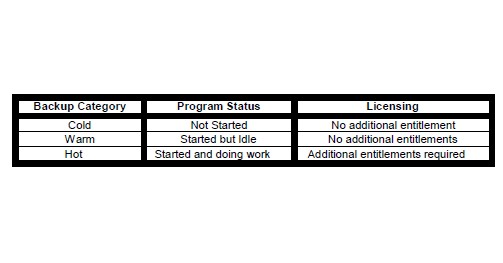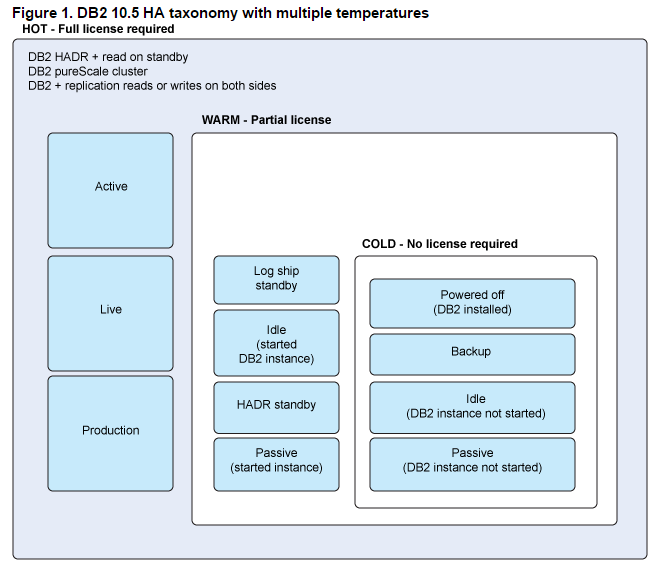As mentioned in the previous blog on this topic, I wanted to dive into the IBM vendor-specific case for managing licenses in hot, warm and cold backup servers. For its part, IBM has generally used the temperature based model for defining backup servers (Hot, Warm, and Cold). As described in the IBM Passport Advantage Distributed Software Licensing Guide:
“In cold and warm situations, a separate entitlement for the copy on the backup machine is typically not required and no additional charge applies. In a hot backup situation, the customer must acquire license entitlements sufficient for that machine. All programs running in backup mode must be solely under the customer’s control, even if running at another enterprise’s location. Any program’s unique terms would be documented in the program’s license information document.”

“Doing work” includes, but is not limited to activities such as:
- Programming
- Development
- Program maintenance
- Testing
- Mirroring of transactions
- Updating of files
- Synchronization of programs, data, or other resources (for example, active linking with another machine, program, database, or other resource, and so on)
- Any activity or configurations that would allow an active hot switch or other synchronized switch over between programs, databases, or other resources to occur.
Note, however, that in the IBM guide, they specifically call out the scenario where the program is running in a high availability (HA) environment, in which case, the warm backup server would require a license entitlement, although it may be a “partial license” rather than a full license as in the hot backup case. In the HA scenario where you are “using various techniques (for example, duplexing, mirroring of files or transactions, maintaining a heartbeat, or active linking with another machine, program, database, or other resource), the program is considered to be doing work in both the warm and hot situation.”
IBM DB2 High Availability Example
The licensing requirements for the IBM DB2 backup server depend on several factors, as described in the IBM technical note: Licensing distributed DB2 10.5 servers in a high availability (HA) environment:
IT Asset Management
It all starts with knowing what’s in your IT ecosystem. Flexera One discovers even the most elusive assets whether on-prem, SaaS, cloud, containers and more.
- What edition of DB2 you have—for HA, you need to have a least a DB2 Express license; Express-C cannot be used for HA environments.
- The license model/metric—For Limited Use Virtual Server (LUVS) or Fixed Term Server (FTL) licensing options, you would buy an additional LUVS or FTL license for the warm backup server. For the Authorized User Single Install (AUSI) model, you’d license the standby server in a warm state for either 5 or 25 AUSIs depending on the edition of DB2. For the Terabyte (TB) license, the warm backup server requires one TB license for each database on the server. And for the Processor Value Unit (PVU) license model, you would license the warm backup server for 100 PVUs, regardless of the processor configuration in that server.
If you are licensing IBM DB2 in a high availability (HA) environment, you don’t need a license for Cold Backup servers.
(Source: Licensing distributed DB2 10.5 servers in a high availability (HA) environment)
FlexNet Manager Suite automates the process of applying license exemptions based on the server role—including warm and cold backup, test, QA, training, etc. based on the vendor specific software product use rights that are encapsulated in its Product Use Rights Library.







